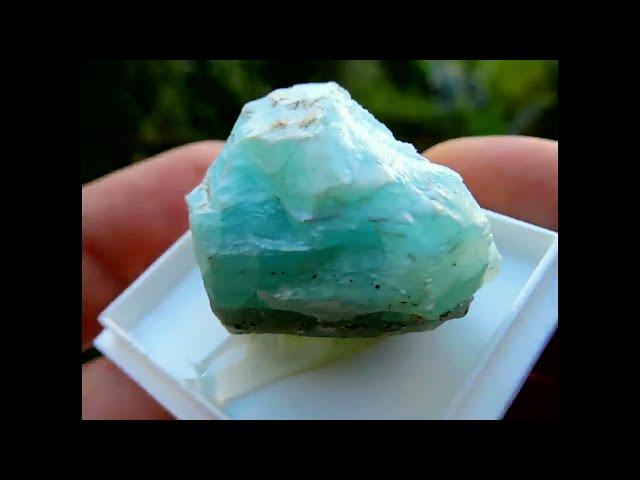
Blue Smithsonite mineral specimen from the Lavrion mines in Greece
A delightful example of blue Smithsonite found at the famous ancient Lavrion mines in Greece. Smithsonite is named in honor of James Smithson, the founder of the Smithsonian Institution.
Most of the famous ancient Lavrion mines are over 2500 years old and have a total length of over 50 kilometers. They were built on 6 underground levels and the entire mining site constitutes a natural museum since more than 680 mineral species can be found to date in the region which comprises almost 12.5% of the known minerals worldwide. Lavrion has aroused the interest of a growing number of mineralogists and amateur collectors due to both the variety and the beauty of its samples.
The story of how mining began in the Lavrion district is lost in the mists of early history. Many ancient writers and orators mention Lavrion including Aeschylus, Aristotle, Demosthenes, Lysias, Aristophanes and Strabo. According to Aristotle, it was in 483 B.C when the rich deposits of Maronia (present day Kamariza) were discovered.
Most of the famous ancient Lavrion mines are over 2500 years old and have a total length of over 50 kilometers. They were built on 6 underground levels and the entire mining site constitutes a natural museum since more than 680 mineral species can be found to date in the region which comprises almost 12.5% of the known minerals worldwide. Lavrion has aroused the interest of a growing number of mineralogists and amateur collectors due to both the variety and the beauty of its samples.
The story of how mining began in the Lavrion district is lost in the mists of early history. Many ancient writers and orators mention Lavrion including Aeschylus, Aristotle, Demosthenes, Lysias, Aristophanes and Strabo. According to Aristotle, it was in 483 B.C when the rich deposits of Maronia (present day Kamariza) were discovered.
Комментарии:
Blue Smithsonite mineral specimen from the Lavrion mines in Greece
Orykton Minerals
День Победы 2022 в Токсово
КДЦ Токсово
Crossfit Quarterfinals Test 5 | Tyler Rossmann
Tyler Rossmann Workouts
VLOG ️ super market haul/οργάνωση/πόσα φαγητά μαγείρεψα σήμερα
xrisa's perfect home 🏠 💕
Makrana Albeta White Marble Tiles • Online Order @ 9571066808• #shorts
Azhari Marble Arts
戏曲老电影《巴山冤案》1984年(高清完整版)
老电影频道km


























